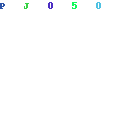Mold: More than a Number
You may take air samples when trying to identify a hidden mold problem. The total number of spores in the complaint area should be compared to indoor and outdoor controls, or more accurately, “references”. For example, if you find 10,000 spores per cubic meter in the complaint area, and only 1,000 in the reference samples, there is a high likelihood of indoor amplification.
Although it’s important to look at the total numbers, it’s critical to also make comparisons of the types of mold. Each type of mold is unique. There are some types that will predominantly grow on leaves outdoors. These don’t have an apetite for building materials and will rarely be found growing indoors. Other types, however, do have the enzymes needed to digest common building materials in its quest for more food.
A few references can help you make a distinction between types of mold typically found outdoors and those that can grow on building materials. I’ll summarize a few of these references below:
- EPA BASE Study. In the 90′s, the Environmental Protection Agency carried out the Building Assessment Survey and Evaluation (BASE) study which performed a thorough indoor air quality assessment in 100 office buildings. A document published from the study describes how the EPA categorized their air sampling results, placing each type into one of four fungal groupings. Click Fungal Groupings to download the PDF from the EPA website.
- IESO Standard. The Indoor Environmental Standards Organization (IESO) published a non-ANSI standard in 2002 titled, “Standards of Practice for the Assessment of Indoor Environmental Quality”. The standard identifies genera of mold that may indicate the potential for moisture and mold. The list includes:
- Aureobasidium
- Aspergillus
- Chaetomium
- Fusarium
- Penicillium
- Trichoderma
- Stachybotrys
- Ulocladium
- “Sampling and Analysis of Indoor Microorganisms” is an excellent book edited by Chin Yang. In the chapter describing microscopic methods, the book identifies the following genera as water damage indicators:
- Chaetomium
- Stachybotrys
- Memnoniella
- Ulocladium
- Aspergillus-Penicillium Group is also mentioned
- ERMI. Researchers from EPA and HUD developed the Environmental Relative Moldiness Index (ERMI) to help identify problem homes. I’ll describe the whole ERMI process in a future post, but for now we’ll only look at its fungal categories.
- Water damage indicators: Stachybotrys chartarum, Chaetomium globosum, Cladosporium sphaerospermum, Aspergillus versicolor, Eurotium (A.)amstalodami, Penicillium variabile, Aspergillus flavus, Aspergillus restrictus, Penicillium crustosum, Penicillium chrysogenum, Aspergillus niger, Aspergillus sclerotiorum, Penicillium purpurogenum, Aspergillus fumigatus, Penicillium corylophilum, Aureobasidium pullulans, Aspergillus ochraceus, Penicillium brevicompactum, Paecilomyces variotii, Aspergillus sydowii, Penicillium spinulosum, Wallemia sebi, Aspergillus unguis, Scopulariopsis brevicaulis, Scopulariopsis chartarum, Aspergillus penicillioides, Trichoderma viride.
- “Normal” species: Acremonium strictum, Alternaria alternata, Aspergillus ustus, Cladosporium cladosporioides v1, Cladosporium cladosporioides v2, Cladosporium herbarum, Epicoccum nigrum, Mucor & Rhizopus group, Penicillium chrysogenum, Rhizopus stolonifer
Hopefully the references above will help you better distinguish common outdoor fungi and those that may indicate indoor air contamination.
Do you know of any additional references that discuss this topic? Please leave a comment below!
[osd_social_media_sharing]


Follow Us!